
On Windows 10, the ability to put a computer to hibernate and sleep are great features to resume where you left off quickly and save battery. However, using these features can also cause the system to constantly wake up automatically at night or when you’re not using it.
The system uses multiple power states, including sleep, hibernation, and hybrid. When you use any of these features, even though the computer isn’t functioning, it’s still able to wake up automatically to perform scheduled tasks, and peripherals (such as network card, mouse, keyboard, and others) can also switch the power state to fully functional.
If your computer keeps waking up at random times, Windows 10 includes the tools to discover the reason for the problem and disable the wake timers per device, task, or globally.
This guide will teach you the steps to keep Windows 10 from waking up automatically.
Determine what’s waking up computer on Windows 10
To determine if a device or scheduled task is requesting to wake up the computer, use these steps:
-
Open Start.
-
Search for Command Prompt, right-click the top result, and select the Run as administrator option.
-
Type the following command to find out the devices allowed to wake up the computer and press Enter:
powercfg /devicequery wake_armed

-
Type the following command to determine the device waking up the computer and press Enter:
powercfg /lastwake

-
Type the following command to find out the scheduled tasks requesting to wake up the computer and press Enter:
powercfg /waketimers

-
Confirm whether a device and task are waking up your computer.
Once you complete the steps, you’ll understand what’s waking up your computer at night or when you’re not using it.
Disable wake timers on Windows 10
There are at least two solutions to prevent a device from waking up accidentally. You can disable the device or the scheduled task individually. Or you can disable all wake timers on Windows 10. The steps below will explain the instructions to complete both scenarios.
Stop device from waking up computer
If you have determined a device (network card, keyboard, mouse, etc.) is waking up the computer every night, you can disable the power on feature from Device Manager using these steps:
-
Open Start on Windows 10.
-
Search for Device Manager and click the top result to open the app.
-
Expand the branch with the device to configure.
-
Right-click the device and select the Properties option.
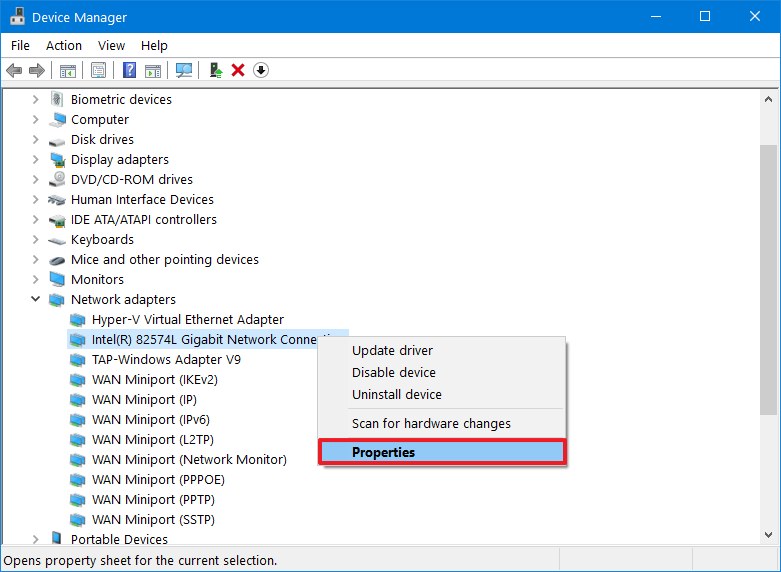
-
Click the Power Management tab.
-
Clear the Allow this device to wake the computer option.
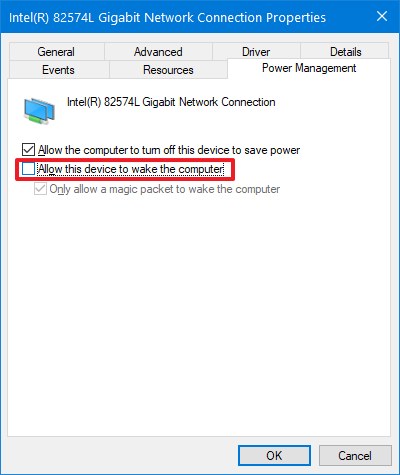
- Click the OK button.
Once you complete the steps, the device will no longer wake the computer in the middle of the night.
If you don’t want any device accidentally waking up the computer, repeat the above steps for every device allowed to start the computer.
Stop scheduled tasks from waking up computer
If the problem is a scheduled task, you’ll need to modify or disable the task to prevent the computer from waking up.
To stop a scheduled task from requesting to wake up the computer, use these steps:
-
Open Start.
-
Search for Task Scheduler and click the top result to open the app.
-
Navigate to the task causing the random wake up.
Quick tip: The task path can be found in the output of the commandpowercfg /waketimersthat you ran earlier. -
Right-click the task and select the Properties option.
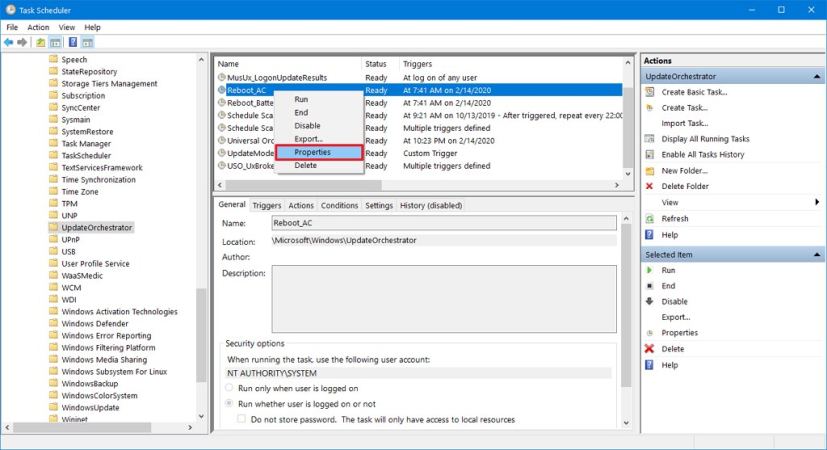
-
Click the Conditions tab.
-
Clear the Weak the computer to run this task option.
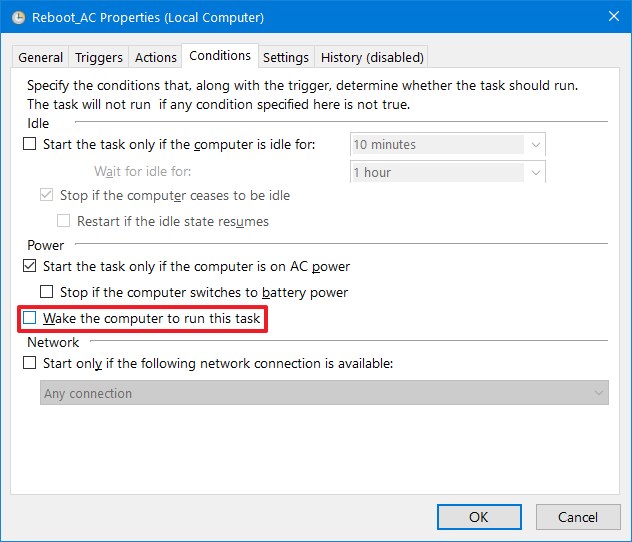 Quick tip: If you want the task to run at a different time, you can modify the schedule from the “Triggers” tab.
Quick tip: If you want the task to run at a different time, you can modify the schedule from the “Triggers” tab. -
Click the OK button.
After you complete the steps, the task will no longer wake up the computer.
Disable system scheduled task
If you’re not able to save the changes of the scheduled task as a result of not having enough permissions, you’ll need to use the Microsoft PsExec tool to disable the task using Command Prompt.
-
Open Sysinternals website.
-
Click the Download PsTools link and download the file to your computer.
-
Open the zip folder with File Explorer.
-
Select the PsExec.exe file.
-
Click the Copy option from the “Home” tab.
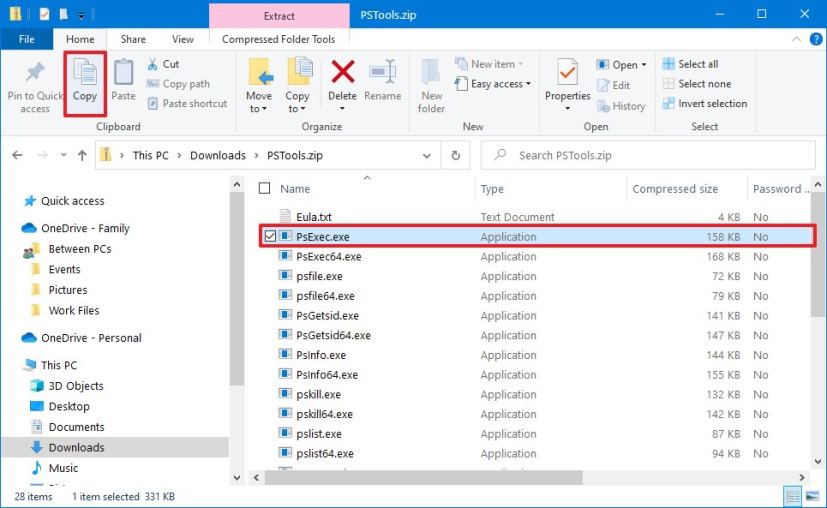
-
Click on This PC from the left pane.
-
Open the Local Disk drive.
-
Click the Paste option from the Home tab.
-
Open Start.
-
Search for Command Prompt, right-click the top result, and select the Run as administrator option.
-
Type the following command to navigate to the root of the drive and press Enter:
cd \
-
Type the following command to start the tool and press Enter:
psexec.exe /s cmd.exe
-
Type the following command to disable the task waking up the computer and press Enter:
schtasks /change /tn "PATH\TO\TASK" /disable
In the command, change PATH\TO\TASK with the path for the scheduled task you determined earlier using the
powercfg /waketimers.This example disables the Windows Update Scheduled Start task:
schtasks /change /tn "\Microsoft\Windows\WindowsUpdate\Scheduled Start" /disable

Once you complete the steps, Windows 10 should no longer wake up your computer. If you found multiple tasks waking up the computer, you may need to repeat the steps to disable those scheduled tasks.
Stop automatic maintenance from waking up computer
Windows 10 includes a feature to perform automatic maintenance, which can cause the computer to wake up automatically.
To prevent automatic maintenance from waking up the device, use these steps:
-
Open Control Panel.
-
Click on System and Security.
-
Click on Security and Maintenance.
-
Expand the Maintenance section.
-
Under the “Automatic Maintenance” section, click the Change maintenance settings option.
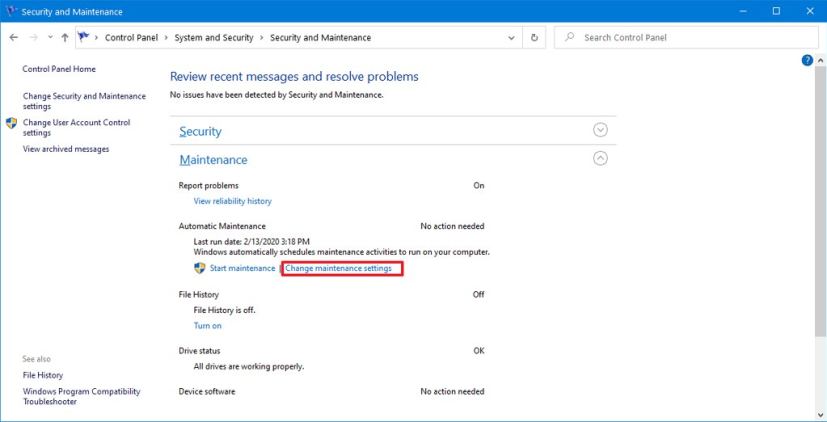
-
Clear the Allow scheduled maintenance to wake my computer at the scheduled time option.
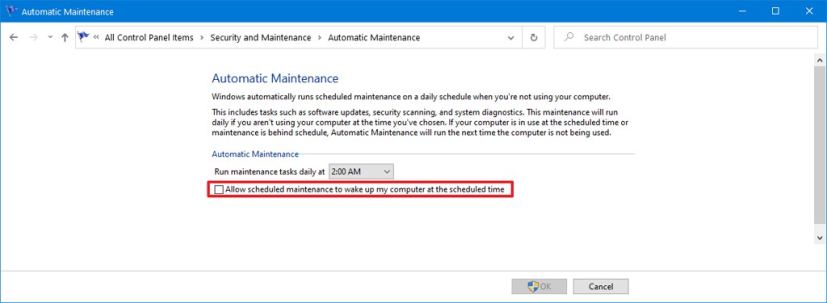
-
(Optional) Change the maintenance schedule time as needed.
-
Click the OK button.
After you complete the steps, the computer will no longer wake up to perform automatic maintenance.
Disable all wake timers on Windows 10
If you want to prevent any scheduled task or device from waking up your computer, you can disable all wake timers globally.
To disable wake timers on Windows 10, use these steps:
-
Open Settings.
-
Click on System.
-
Click on Power & sleep.
-
Under the “Related settings” section, click the Additional power settings option.
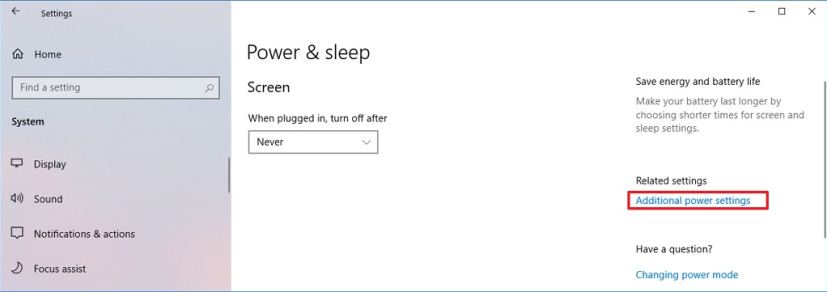
-
Click the Change plan settings option for the current power plan option.
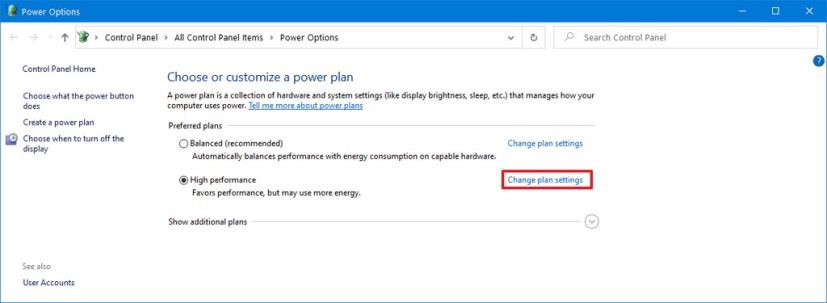
-
Click the Change advanced power settings option.
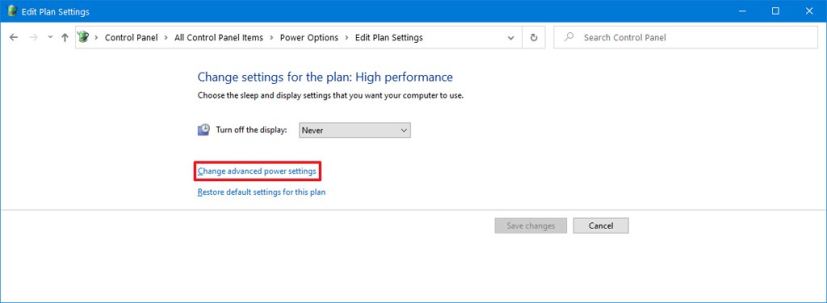
-
Expand the Sleep branch.
-
Expand the Allow wake timers branch.
-
In the “Setting” field, select the Disable option.
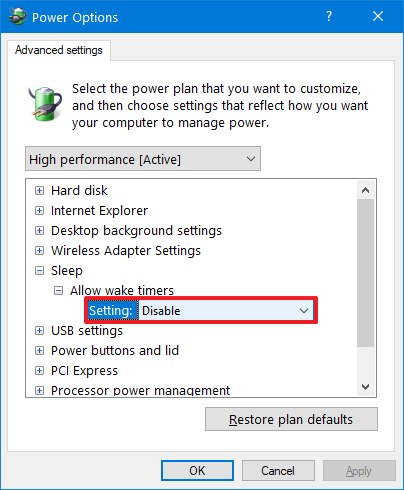
-
Click the Apply button.
-
Click the OK button.
Once you complete the steps, the device nor the scheduled task will no longer be able to run when the computer is asleep or hibernating, preventing the computer from waking up automatically.
